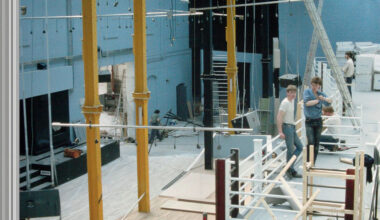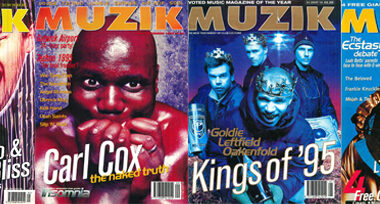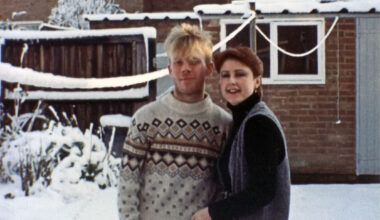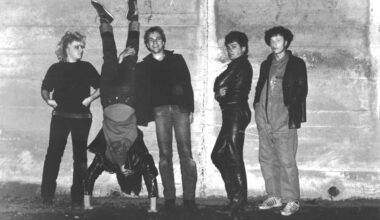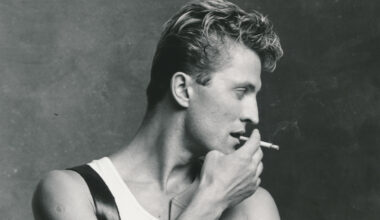At the back end of 1969, a new music making machine has its debut on British TV. The show, unsurprisingly, is ‘Tomorrow’s World’, the machine is the Moog Modular…
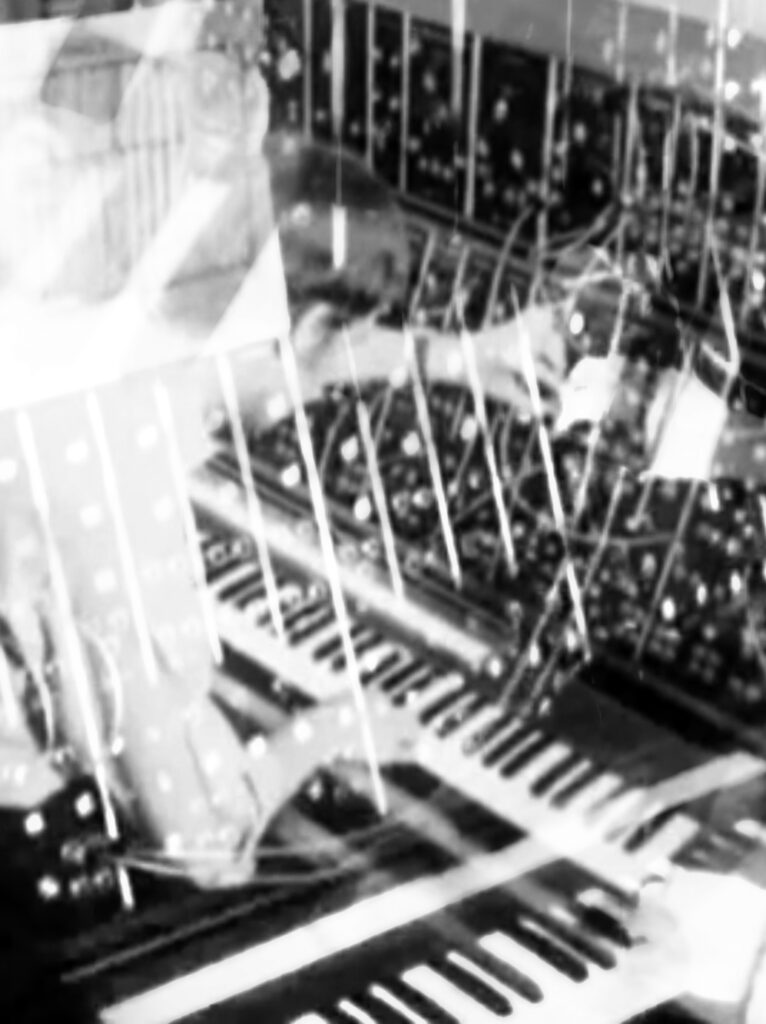
Early evening 30 September 1969. After ‘Z Cars’ and before ‘Decidedly Dusty’ (starring Dusty Springfield with special guests the Bee Gees), it’s the latest edition of ‘Tomorrow’s World’. Presenter Derek Cooper introducines the Moog modular synthesiser. We see Mike Vickers, once of Manfred Mann, assemble a multi-tracked Moog rendition of ‘Greensleeves’, while Cooper announces that “it produces sounds in a matter of minutes that would normally take radiophonic experts with their complicated equipment days of work…”
This was the first time a Moog had been seen on British TV, but rock audiences had already heard it. Just four days earlier The Beatles had released ‘Abbey Road’, which featured a Moog, while over in the USA mainstream acts including The Byrds, The Monkees and The Doors had already been using Moogs for a couple of years.
By the time of the broadcast, multi-instrumentalist Vickers, not yet 30, was already a seasoned pop veteran. Post-Manfred Mann he’d released a solo album and worked with The Beatles, and would go on to produce music for film and television. It was Vickers who’d set up the patches for The Beatles’ ‘Abbey Road’ sessions.
“I’d worked with George Martin a lot,” he explains, “particularly with Cilla Black, and on the famous ‘All You Need Is Love’ sessions. The Beatles wanted some Moog sounds on ‘Abbey Road’, George knew I could programme a Moog, so he asked me in. ‘I think you should charge £30,’ he said. So I did.”
Vickers had been interested in electronic music since hearing Stockhausen and other electronic pioneers in his teens. Music industry hearsay about “some mad guy in New York State, inventing something called a synthesiser” led him to Moog and in 1968 he bought a Moog Series III C for approximately £3,500.
There were few Moogs in the country at that time, and though audiences were becoming accustomed to what they sounded like, what they actually were remained obscure. A Melody Maker article from November 1969 describes the Moog as a “computer-like device which tapes basic tones and pitches” before declaring “what is believed to be the only Moog in the country resides in the home of Beatle George Harrison”. Actually, the first Moog in Britain had gone to Manchester University in summer 1968, the second to The Rolling Stones in September that year. Vickers got his soon after, and as a working performer/arranger/composer who knew his way around a recording studio he soon became the go-to guy for all things Moog on the London session scene.
“It led to me composing a lot of Moog-based music for various library companies,” says Vickers. “There was a lot of interest because very few people, especially in the UK, were doing anything like it at the time. I was often met with suspicion, but just carried on regardless. I just saw the Moog as another instrument, rather than the end of everything that had gone before, and the beginning of everything that would follow.”
Established as a sort of Beaver and Krause rolled into one, Vickers was the obvious choice for the ‘Tomorrow’s World’ demonstration. Vickers had the Moog set up in his Baker Street flat, and it was here that the BBC camera crew recorded the footage. Vickers doesn’t recall the broadcast getting much reaction at the time.
“In retrospect,” he muses, “the odd thing about it is that I chose to perform my Moog version of ‘Greensleeves’. An ancient melody played on a futuristic instrument.”
Five months after becoming the first person to play Moog on British television, Vickers also facilitated the instrument’s British stage debut. Keith Emerson, then of The Nice, had heard Wendy Carlos’ ‘Switched-On Bach’ in a record shop. Intrigued, he asked his manager Tony Stratton-Smith to see if anyone in London had a Moog. Stratton-Smith soon found Vickers, who duly demonstrated his Moog to Emerson, who in turn asked if he could borrow it for a forthcoming Nice concert. Vickers voiced reservations, explaining that the Moog, complex and unstable, was not really intended for live performance, but Vickers agreed to let Emerson have a go on condition that he was on hand to oversee proceedings.
So on 7 February 1970, The Nice performed at the Royal Festival Hall with the Royal Philharmonic Orchestra. On stage, next to Emerson’s Hammond was Vickers’ Moog. Behind it was Vickers himself. Reviewing the concert, the New Musical Express said, “The Moog was introduced for the first time on a British stage during ‘She Belongs To Me’. It’s a weird thing, resembling a switchboard and takes some playing. Mike Vickers, its owner, was on hand to programme it…”
As the decade progressed synths became commonplace and Vickers’ near-monopoly soon ended. But he continued with electronic music, an ARP 2600, an EMS Synthi, a Space Echo, and various effects boxes joining the Moog. He was still turning out Moog library music in the mid-70s. Eventually he sold the Moog to composer Adrian Wagner.
“I now have a Moog emulation on my Mac, which works well, but isn’t as much fun as my original Moog,” he laughs.
Meanwhile the ‘Tomorrow’s World’ feature lay hidden in archival purgatory until it was recently retrieved for the YouTube generation. History confirms its perceptiveness on several counts. Not only did it introduce, on primetime TV, a revolutionary instrument that would be unfamiliar to viewers, it also acknowledges the almost synonymous association between electronic music and the BBC Radiophonic Workshop in Britain at the time.
By talking about “radiophonic experts and their complicated equipment”, Cooper takes for granted that viewers knew what “radiophonic” meant. Most presciently, it identified a shift.
The age of tape manipulation was passing. What once seemed like the future was about to slip into history. Now the synthesiser was the future.
